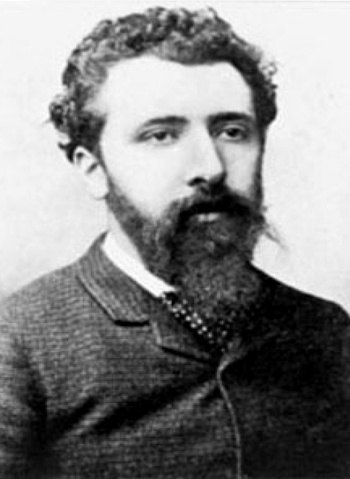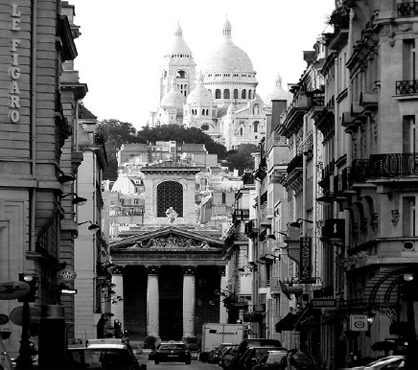Painters use to mix pigment in their studios. Tube paints provide the freedom to paint out-of-doors. This newfound ability is revolutionary to the world of painting; it is the catalyst announcing the new age of Modern Art, and the passing of the Renaissance era. Beginning with Monet, successive paintings illustrate the emergence of fresh styles and techniques. The London based, Winsor & Newton Company invented and manufacture tube paints. This image is of their first tube paints, 1840 - 1911.
Georges Seurat (1859 – 1891) is a Parisian. He studies at the prestigious school of fine arts, École des Beaux-Arts, in Paris and he takes lessons from the traditionalist painter, Ingres, a student of Jacques Louis David - both win scholarships to the École. David’s painting, The Death of Socrates, is in the Renaissance collection.
Seurat is drawn to the structure of Neo-Impressionism. He creates monumental art depicting modern urban life and studies the latest scientific theories pertaining to light and color.
The artist lives in a modest art studio with Madeleine Knobloch, a young model. Seurat’s parents disapprove of their relationship, but he cannot keep his young family a secret. With mixed feelings, they meet days before he chokes to death from a throat infection caused by Diphtheria. Their small son dies two weeks later, and his father follows.
During Seurat’s brief life, he completes seven masterpieces demonstrating supreme intellectual and artistic achievements to qualify for the rank of “Master.” An MFA degree would be its equivalent.

Modern, Neo-Impressionist movement. Art criticism flourishes in many French newspapers and journals. American papers keep their readership informed.
In architecture, the neoclassicism of the late 18th century is perpetuated by monumental forms to serve the political ambitions of Napoleon III. Later, you see an eclectic style based on both classical and baroque architecture emerging. A Sunday on La Grande Jatte debuts in 1886, at the last Impressionist exhibition, somewhere on or near Rue Laffitte.
Graduating from the École des Beaux-Arts is a coveted stamp of approval that guarantees painters and architects a fine education and a secure future. Alexandre Gustave Eiffel, who studies engineering, at the École Polytechnique and the École Centrale, investigates new industrial materials and construction techniques, for the future Eiffel Tower.
The stretch of island, on the banks of the Seine River, near the gates of Paris is known as La Grande Jatte. The word Jatte means “the big bowl,” in French.

Go on to Describe, Analyze, Interpret & Conclude. Contact me for help.
A Sunday on La Grande Jatte (c.1884 – 86) Oil on canvas. 82 x 121 in. (208 x 309 cm.) From 1885 to 1886 Seurat develops the specific Divisionist technique, best known as Pointillism. This is a tedious color-mixing method of squeezing and carefully dabbing complementary dots (points) of pure color from their tubes onto a palette and then to canvas.
From a distance a scientific, optical illusion fuses them in your brain. The dots of separate pigment come together as a whole and glow with maximum brilliance.
Preparation for this painting involves approximately 26 drawings, 28 panels, and 3 larger canvases. Egyptian bas reliefs, such as Sekmet with head of lioness and a solar disk/sun disk and uraeus on her head at the Louvre Museum, Paris, France, influence Seurat’s use of many figures depicted in profile.
Here is a detailed study of Seurat’s, The Models. This painting measures (79 x 99 in) Its size gives you a sense of the enormity of Seurat’s scientific research. Finally, after two years of rigorous work, twenty-six-year old Seurat debuts his masterpiece.